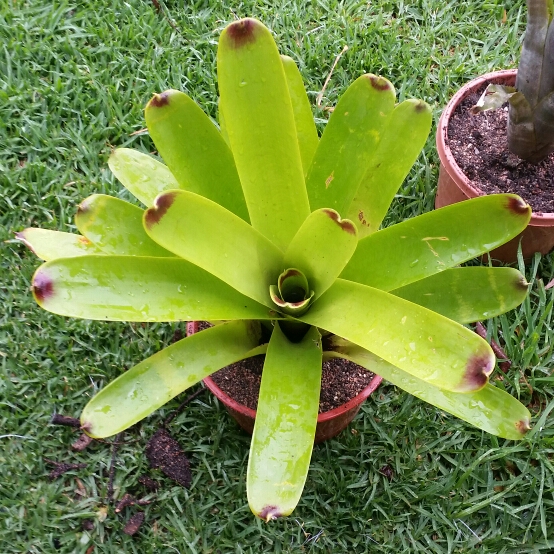
Vriesea 'Philippo Coburgii'
Bromeliad Vriesea 'Philippo Coburgii'
The Vriesea Philippo-Coburgii' is cold hardy, and doesn't flower unless it gets some frost. In strong light the glossy, smooth leaves, which have purple tips that resemble finger-nails, become yellow-green, and the plant produces tall red and yellow flower spikes.
Contributed by @Muzz67
-
Partial shade
-
Very little water
-
Not Frost hardy
-
Rich and free draining
Common name
Bromeliad Vriesea 'Philippo Coburgii'
Latin name
Vriesea 'Philippo Coburgii'
type
Flowering plant
family
Bromeliaceae
ph
5.0 - 6.5 Acid - Neutral
Plant & bloom calendar
-
Best time to plant
full grown dimensions
 0.25 M
0.40 M
0.25 M
0.40 M
Vriesea 'Philippo Coburgii'
The Vriesea Philippo-Coburgii' is cold hardy, and doesn't flower unless it gets some frost. In strong light the glossy, smooth leaves, which have purple tips that resemble finger-nails, become yellow-green, and the plant produces tall red and yellow flower spikes.
Planting
From Early Spring TO Late Winter
Pots and potting media can directly affect the moisture levels in the bromeliad. Plastic pots tend to hold moisture for a longer period of time. If you are in an arid region or raising your bromeliad in a heated home, you may want to consider a plastic container to house your plant in. Un-glazed clay pots are porous and allow water to seep out. If you are living in a very humid area, you may want to consider this type of container so your plant doesn’t stay overly wet. You will want to make sure that there is some sort of saucer or pad underneath to catch the seeping water otherwise you could end up damaging the the floor or furniture the pot sits on. Regardless the type of container, never use soil when potting your bromeliad. It is too dense and will not allow for the quick drainage that bromeliads require. Instead, use potting mixes specially formulated for bromeliads or mix your own using porous materials.
Propagation
From Early Spring TO Early Spring
These are pretty easy to propagate, the main plant will send out small off sets around its base, when these have developed small roots they can be cut off and potted up.












